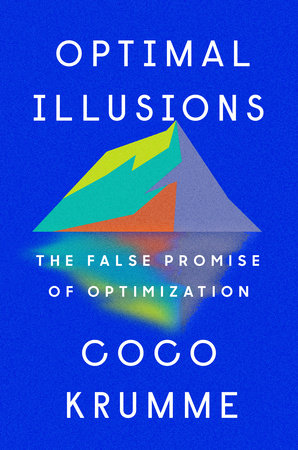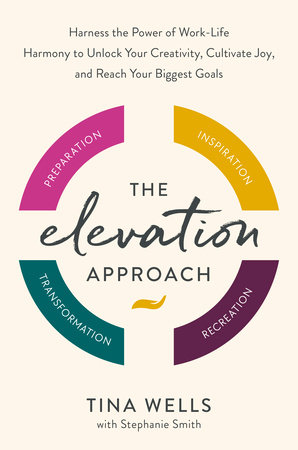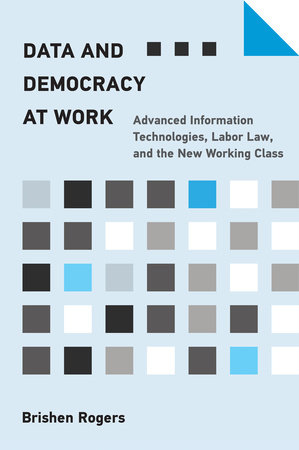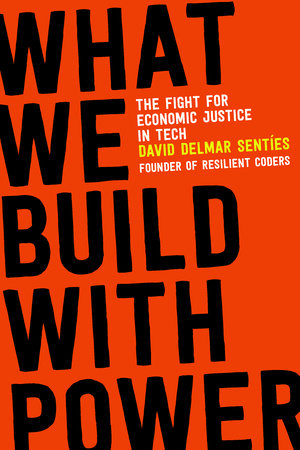Quick Summary
One Sentence Summary
“Mad Genius” by Randy Gage is a provocative guide that challenges readers to harness their inner madness to unleash creativity and innovation.
Big Idea
The central premise of “Mad Genius” is that groundbreaking ideas and transformative innovations often stem from thinking that society might label as ‘mad’ or unconventional, urging readers to embrace their unique, sometimes eccentric ideas to make a significant impact.
Five Key Ideas
- Embrace Unconventional Thinking: Gage encourages stepping outside traditional thought patterns.
- Risks and Failures as Stepping Stones: Understanding that taking risks and facing failures is crucial for extraordinary achievements.
- Harnessing Creativity: Techniques and mindsets for fostering and maintaining creativity.
- Disruptive Innovation: Emphasizing the importance of disruptive thinking in creating breakthroughs in any field.
- Personal Transformation: Advocating for continuous self-improvement and learning as a pathway to success.
Actionable Advice
- Challenge the Status Quo: Regularly question and reevaluate established norms in your industry or field.
- Cultivate Curiosity: Stay curious, ask questions, and explore areas outside of your comfort zone.
- Embrace Failure: View failures as learning opportunities and don’t be afraid to fail in the pursuit of innovation.
About the Author
Randy Gage is an American author, speaker, and thought leader, widely recognized for his expertise in prosperity and personal development.
Read Next
For further exploration of similar themes, consider:
- “Outliers” by Malcolm Gladwell, for insights into the factors that contribute to high levels of success.
- “The Art of Possibility” by Rosamund Stone Zander and Benjamin Zander, offering transformational practices for personal and professional life.
- “Think and Grow Rich” by Napoleon Hill, delving into the mindset and habits of successful people.
In Depth
Embrace Unconventional Thinking
Randy Gage’s “Mad Genius” pushes us to break free from conventional molds. It’s about daring to be different, to think in ways that might initially seem odd or outlandish. Gage suggests that the most groundbreaking ideas often arise from what many would consider madness.
The book emphasizes that to truly innovate, you must be willing to venture where others haven’t. It’s about stepping off the beaten path, questioning norms, and challenging what’s accepted. Gage argues that real progress isn’t made by following the crowd, but by diverging from it.
For instance, he talks about the Wright brothers. At a time when the idea of humans flying was scoffed at, they dared to think differently. They faced skepticism and ridicule, yet they persisted. Their unconventional thinking literally took humanity to new heights. It’s a clear demonstration of how stepping outside conventional thought can lead to monumental breakthroughs.
Gage urges us not to shy away from our ‘crazy’ ideas. Instead, we should embrace them, nurture them, and see where they lead. He writes:
“The people who change the world are the ones crazy enough to believe they can. Embrace your madness, and understand that it is a divine gift.”
He challenges us to cultivate an environment where these ‘mad’ ideas can thrive. This means fostering curiosity, encouraging risk-taking, and being open to the unconventional. It’s about creating a personal or organizational culture where thinking differently isn’t just tolerated, but celebrated.
Gage also touches on the importance of resilience in the face of opposition. When you think unconventionally, you’re bound to encounter resistance. But it’s this resistance that often indicates you’re onto something significant. The key is to persist, to keep pushing forward despite the challenges.
Another critical aspect is being open to diverse perspectives. Gage encourages us to surround ourselves with people who think differently. It’s in the clash and blend of differing viewpoints that truly novel ideas can emerge.
To sum up, embracing unconventional thinking isn’t just about being different for the sake of it. It’s about believing in the power of your ideas, however ‘mad’ they may seem. It’s about being courageous enough to challenge the status quo and resilient enough to withstand the pushback. And most importantly, it’s about understanding that these ‘mad’ ideas could be the keys to unlocking new realms of possibility.
Risks and Failures as Stepping Stones
“Mad Genius” doesn’t just talk about thinking differently; it dives into action, specifically, the kind that involves risks and the inevitable failures that come with them. Gage makes it clear: if you want to achieve something extraordinary, you’ve got to be willing to fall flat on your face sometimes.
He points out that our greatest lessons often come from our worst defeats. It’s in these moments, when things don’t go as planned, that we’re forced to look at things from a new perspective, to adapt, and to grow.
Gage brings up the story of Thomas Edison. This guy didn’t just wake up one day and invent the lightbulb. He tried thousands of times, failing over and over. But here’s the thing: he didn’t see those attempts as failures. Instead, he famously said:
“I have not failed. I’ve just found 10,000 ways that won’t work.”
That mindset is what Gage is advocating for. It’s about viewing each failure not as a stop sign, but as a stepping stone. It’s about understanding that each misstep brings you closer to your goal, not further away.
The book pushes the idea that to innovate and achieve something truly significant, you can’t play it safe. You’ve got to take risks, and yes, that means sometimes things won’t pan out. But that’s okay. It’s all part of the journey.
Gage emphasizes that the fear of failure is often what holds us back the most. We’re so worried about making a mistake or looking foolish that we don’t even try. But here’s the kicker: not trying is the biggest failure of all. As Gage puts it:
“The biggest risk is not taking any risk… In a world that is changing really quickly, the only strategy that is guaranteed to fail is not taking risks.”
In “Mad Genius,” it’s clear: embracing risk and learning from failure is not just recommended, it’s essential. It’s about cultivating a mindset where you’re not deterred by setbacks, but rather motivated by them.
This key idea isn’t just about being reckless; it’s about calculated risks. It’s about weighing the potential benefits against the potential losses and then taking a leap when it seems right. It’s about not letting the fear of failure paralyze you.
To sum it up, taking risks and facing failures is a crucial part of the journey to extraordinary achievements. It’s about having the courage to try, the resilience to get up when you’re knocked down, and the wisdom to learn from every experience. In the world of “Mad Genius,” failures aren’t dead ends; they’re just bends in the road leading you to where you need to go.
Harnessing Creativity
In “Mad Genius,” Randy Gage delves deep into the art of harnessing creativity. He doesn’t just tell us to be creative; he shows us how. According to Gage, creativity isn’t some mystical gift; it’s a muscle you can build and strengthen.
Gage presents creativity as a habit, not just a spontaneous burst of inspiration. He talks about setting aside time for creative thinking, just like you would for any other important activity. It’s about making creativity a regular part of your routine.
He gives the example of Leonardo da Vinci, a man whose name is practically synonymous with creativity. Da Vinci didn’t just wait around for inspiration to strike. He was constantly observing, questioning, and exploring. He kept detailed notebooks full of sketches, ideas, and observations. Gage points out that this constant curiosity and willingness to explore was key to da Vinci’s creativity.
To drive the point home, Gage asserts:
“Creativity doesn’t wait for that perfect moment. It fashions its own perfect moments out of ordinary ones.”
Gage encourages us to seek inspiration in the everyday, to be curious about the world around us, and to constantly ask questions. He emphasizes that creativity often comes from making connections between seemingly unrelated things. It’s about looking at the world from different angles and perspectives.
Another critical aspect Gage touches on is the importance of a creative environment. He talks about surrounding yourself with things that inspire you, whether that’s art, music, nature, or anything else that sparks your imagination. It’s about creating a space where your creativity can flourish.
Gage also warns against the creativity killers: stress, fear, and negativity. He stresses the importance of a positive mindset and a supportive environment for nurturing creativity. It’s hard to be creative when you’re bogged down by negative thoughts or a toxic environment.
To summarize, harnessing creativity according to “Mad Genius” involves making creativity a habit, cultivating curiosity, seeking inspiration in the ordinary, and creating a supportive environment. It’s about understanding that creativity isn’t just for the ‘chosen few’ but something everyone can tap into with the right mindset and practices.
Disruptive Innovation
“Mad Genius” dives into the concept of disruptive innovation, emphasizing its crucial role in creating real change. Gage isn’t talking about small tweaks or improvements; he’s talking about shaking things up, turning industries on their heads, and doing things no one has dared to do before.
Gage brings up the story of Netflix. Remember when we used to go to video rental stores? Netflix changed all that. They saw an industry stuck in its ways and turned it upside down. They started with mailing DVDs, but the real game-changer was streaming. Gage highlights how Netflix didn’t just improve an existing service; they created a whole new way of consuming entertainment.
This story perfectly encapsulates Gage’s point:
“Innovation is taking two things that already exist and putting them together in a new way.”
Disruptive innovation, according to Gage, is about reimagining the status quo. It’s not just about making something better; it’s about making something different. It’s about seeing opportunities where others see obstacles.
Gage emphasizes the importance of questioning everything. Why do things work the way they do? Could there be a better way? It’s this relentless questioning that leads to disruptive ideas.
He also talks about the importance of looking at other industries for inspiration. Sometimes, the best ideas come from outside your field. It’s about taking concepts from one area and applying them in a totally different context.
Gage doesn’t sugarcoat it, though. He acknowledges that disruptive innovation is risky. You’re venturing into uncharted territory, and there’s no guarantee of success. But, as he puts it:
“The riskiest thing we can do is just maintain the status quo.”
In summary, disruptive innovation is about bold ideas and bold actions. It’s about challenging the norm, questioning everything, and not being afraid to go against the grain. According to “Mad Genius,” if you want to make a real impact, you’ve got to be willing to disrupt.
Personal Transformation
In “Mad Genius,” Randy Gage puts a spotlight on personal transformation as a cornerstone for success. He doesn’t just talk about changing the world; he talks about changing yourself first. According to Gage, real success, the kind that’s fulfilling and long-lasting, starts from within.
Gage shares the journey of Oprah Winfrey as a powerful example. From her difficult early life to becoming a media mogul and philanthropist, Oprah’s story is one of continuous self-improvement and transformation. Gage points out how she didn’t let her past define her future. Instead, she used her challenges as fuel for growth. Her story embodies the idea that:
“Your past doesn’t determine who you are. Your past prepares you for who you are to become.”
Personal transformation, in Gage’s view, is about constant learning and growth. It’s about being open to new ideas, challenging your own beliefs, and always striving to be a better version of yourself.
Gage emphasizes the importance of self-awareness in this process. It’s about knowing your strengths and weaknesses, understanding your emotions, and being honest with yourself about what you need to work on.
He also talks about the role of habits in personal transformation. It’s the small things you do every day that shape who you are. Gage suggests intentionally building habits that align with your goals and who you want to become.
Another key aspect is resilience. Gage stresses that the path to personal transformation is not a straight line; there will be setbacks. But it’s how you respond to those setbacks that matters. It’s about picking yourself up, learning from your experiences, and continuing to move forward.
To sum up, personal transformation according to “Mad Genius” is about continuous growth, self-awareness, intentional habit-building, and resilience. It’s about understanding that change starts from within, and that to make a significant impact in the world, you first need to work on yourself.
Actionable Advice
- Embrace Unconventional Thinking: Don’t be afraid to challenge norms and explore ‘crazy’ ideas.
- Take Calculated Risks: Don’t shy away from risks; use them as opportunities for growth.
- Learn from Failures: See each failure as a stepping stone, not a setback.
- Cultivate Creativity: Set aside regular time for creative thinking and nurture your curiosity.
- Seek Diverse Perspectives: Surround yourself with people who think differently to stimulate new ideas.
- Disrupt the Status Quo: Question existing ways of doing things and don’t be afraid to innovate.
- Focus on Personal Growth: Invest in self-improvement and embrace continuous learning.
- Build Resilient Habits: Develop daily habits that align with your goals and personal transformation.
- Maintain a Positive Environment: Create a space that inspires and supports your creativity and growth.
- Reflect Regularly: Take time to reflect on your progress, challenges, and future goals.
About the Author
Randy Gage is a renowned author, speaker, and thought leader, known for his expertise in prosperity and success. Born into challenging circumstances, Gage overcame adversity, turning his life around from a high school dropout and dishwasher to a successful entrepreneur. He has authored several books, including the bestseller “Risky Is the New Safe” and the groundbreaking “Mad Genius.” Gage’s work emphasizes personal responsibility, self-reliance, and the power of positive thinking. He believes that success is not a matter of chance but a result of deliberate actions and mindset. His teachings advocate for disruptive thinking, the courage to embrace risks, and the importance of continuous personal growth. Gage’s inspirational story and practical wisdom have made him a sought-after speaker and mentor for those seeking to achieve their full potential.
Read These Next
You might like these similar books
- “Think and Grow Rich” by Napoleon Hill
- “Outliers: The Story of Success” by Malcolm Gladwell
- “The Lean Startup” by Eric Ries
- “Originals: How Non-Conformists Move the World” by Adam Grant
- “Start with Why: How Great Leaders Inspire Everyone to Take Action” by Simon Sinek
FAQ
Q: What is ‘Mad Genius’ about?
A: ‘Mad Genius’ is a book by Randy Gage that explores creativity, innovation, and personal transformation. It encourages readers to think differently and embrace their inner ‘mad genius’ to achieve success.
Q: Who should read ‘Mad Genius’?
A: Entrepreneurs, business leaders, creative professionals, and anyone interested in personal development and unconventional thinking.
Q: Is ‘Mad Genius’ suitable for beginners in entrepreneurship?
A: Yes, it provides insights that are valuable for beginners and experienced professionals alike.
Q: How long is the book ‘Mad Genius’?
A: The length can vary based on the edition, but it’s generally a medium-length book, suitable for a thorough yet engaging read.
Q: Does ‘Mad Genius’ provide practical advice or just theory?
A: The book offers a mix of both, with real-world examples and actionable advice for readers to apply.
Q: Is ‘Mad Genius’ focused only on business success?
A: While it has a strong focus on business and innovation, it also covers personal growth and mindset, making it relevant in various life aspects.







